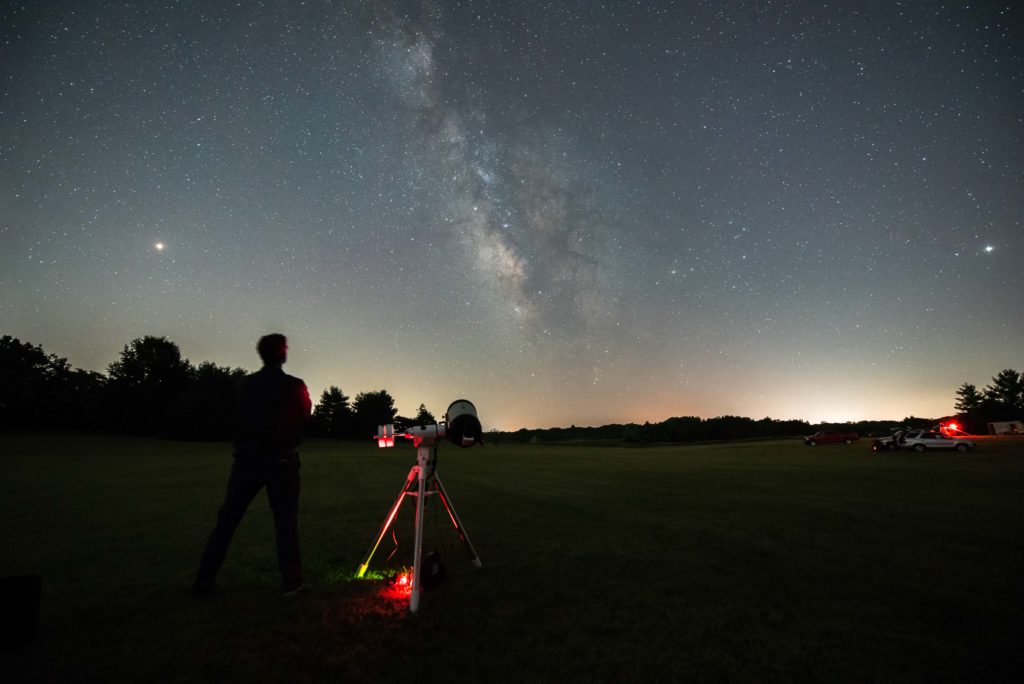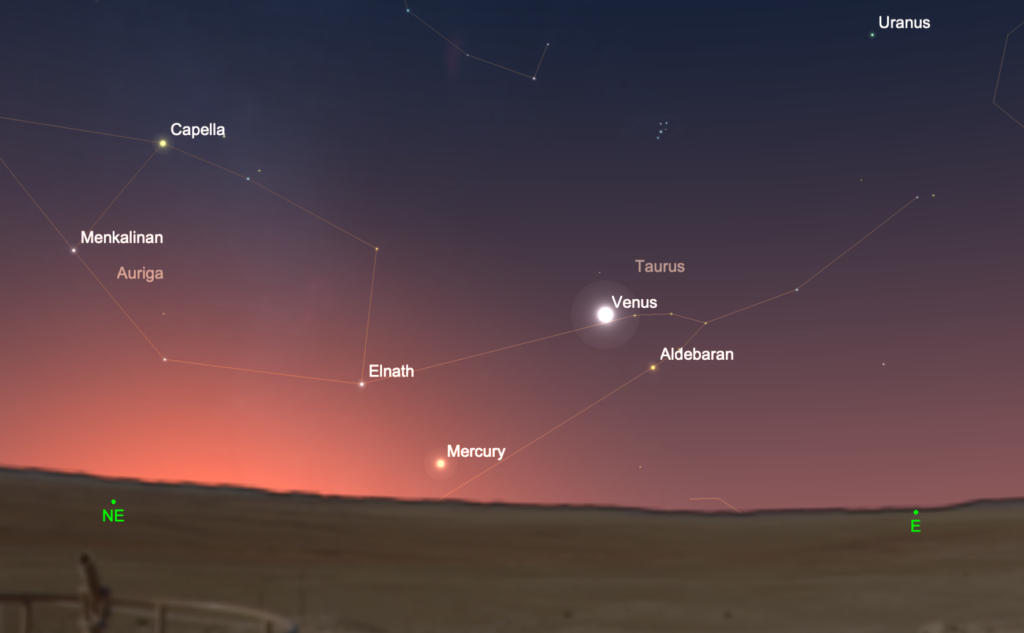
(Looking for last month’s night sky guide? You can find it at this link.)
All the bright planets make an appearance this month. The inferior planets, so called, Venus and Mercury lie low in the eastern sky before sunrise, with the former nicely tangled in the stars of the Hyades in early July. Jupiter lies near the celestial equator in Pisces and grows fat and bright and ideal for telescopic observing. Saturn, too, looks great in a telescope as it slowly grows bigger. This month also brings the largest Full Moon of the year. And don’t forget about the Milky Way emerging in the darkening east-southeastern sky after
sunset. Turn your optics along this spectacular river of stars to glimpse the many clusters, nebulae, and star clouds in our part of the galaxy. Here’s what’s in the night sky this month…

1 July. Look just over the eastern horizon before sunrise to see Venus rising in the Hyades star cluster in the constellation Taurus. The planet shines at -3.9, modest for Venus, and shows in a telescope a disk about 85% illuminated. A pair of binoculars help show the far fainter stars of the Hyades. Mercury trails Venus by about 10o. Though low over the horizon, Mercury shines at magnitude -0.7 and appears some 70% illuminated in a telescope.
4 July. Earth lies at aphelion, the most distant point in its orbit from the Sun at a distance of 152,098,455km or about 3.4% farther than at perihelion in early January.
7 July. First Quarter Moon, 02:14UT
10 July. Look towards the southern horizon to see a waxing gibbous Moon about 2o from the bright red supergiant Antares at the heart of the constellation Scorpius.
13 July. Full Moon, 18:38UT. This is the Full Buck Moon. It arrives with the Moon at perigee which means this is the largest Full Moon of 2022.

17 July. Wow! There’s an impressive collection of celestial sights before sunrise with Venus, Aldebaran (and the Hyades), Mars, Jupiter, a gibbous Moon, and Saturn in an arc that rises from the northeast to the south. Uranus and Neptune are in there also. Take it all in if you’re up early – no optics needed. But if you do have a telescope handy, turn it towards Saturn (magnitude +0.4) to see its disk spanning nearly 19” and its rings gently tilted about 13o from edge-on.
19 July. Jupiter lies about 2o north of the gibbous Moon. At magnitude -2.6, the big planet vastly outshines all stars and in a telescope presents an impressively large disk about 44” across.
20 July. Last Quarter Moon, 14:19UT
21 July. A waning crescent Moon lies just 2o west of Mars in the early-morning sky. Uranus sits another 6o east of Mars. All lie just north of the head of the constellation Cetus, the Whale. The Red Planet continues to brighten slowly and tonight shines at magnitude +0.3. In a telescope, it shows a small 8”-wide disk with perhaps a little surface detail in good seeing.

23 July. The thinning crescent Moon lies between the Pleiades and Hyades star clusters in the early-morning hours. Plenty of bright northern winter stars are also rising in the east and southeast.
26 July. Look low in the east-northeast before sunrise to see a very slender crescent Moon less than 4o from Venus.
27-30 July. The Delta Aquariid meteor shower peaks with the Moon out of the way this year. This annual event favors observers in the southern hemisphere and southerly latitudes in the northern hemisphere, though all observers can see some of these slow-moving meteors. The Delta Aquariids appear to radiate from a point near the star Skat (delta Aquarii) in the constellation Aquarius. The shower peaks around July 27-30, but unlike most meteor showers, the Delta Aquarids lack a sharp maximum so meteors are visible from mid-July through early August. The maximum hourly rate can reach 15-20 meteors in a dark sky.
28 July. New Moon, 17:55UT